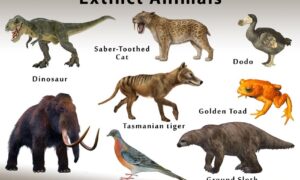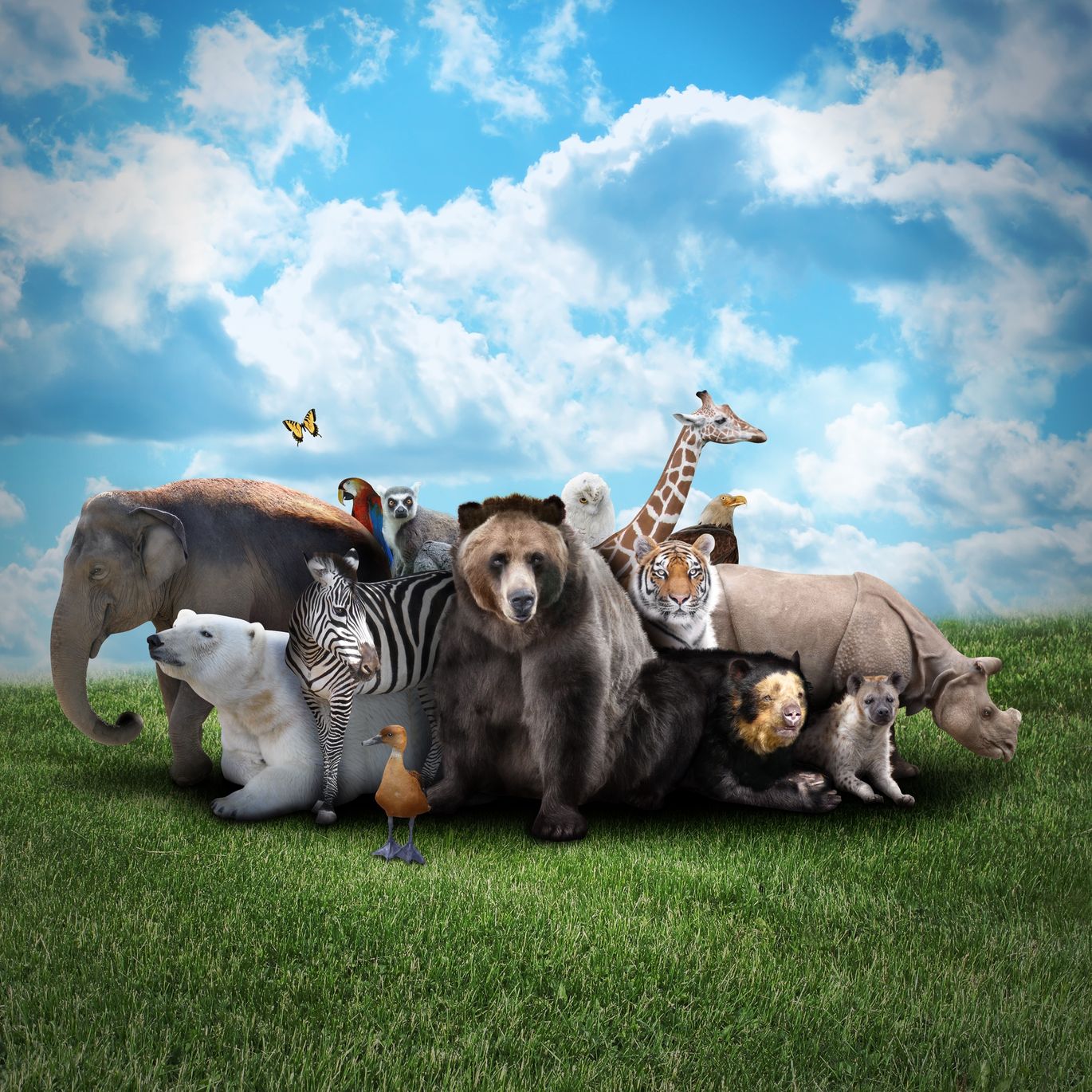Four Types of Wild Dogs In The World

Four Types of Wild Dogs In The World
The canine family includes many species, and wild and domestic animals have many similar traits, as well as a few striking differences. A dog’s excellent sense of hearing and smell allows it to detect sounds we wouldn’t recognize. Throughout its life, canid family members use these senses to hunt for prey and to learn about the world around them. The following article will explore some of these unique traits. You will be better equipped to identify the canine family’s members and their habits.

Four Types of Wild Dogs In The World
Africans wild dogs
Wild dogs are found throughout Africa. Their native habitats are too diverse to support populations anywhere else. These generalist predators thrive in varied habitats and are highly social. The African wild dog used to roam the entire continent but is now limited to southern Africa, including northern Botswana, western Zimbabwe, eastern Namibia, and Tanzania. Wild dogs are extremely social and communicate using vocalizations, touch, and actions. In fact, they have been known to aid weaker pack members in times of need.
Unlike domestic dogs, African wild dogs have a unique pack system. Usually a new pack forms when related males and females mate. The new pack will contain anywhere from seven to ten adult dogs, with the dominant male and female as the only ones capable of reproduction. The new pack will feed pups through regurgitated food from the dominant male and female. The pups of a new pack are often less likely to survive if there is only one parent to eat.
While African wild dogs are highly social, they are effective hunters and are highly effective predators of medium-sized ungulates. The hunt is often initiated with a playful ceremony in which the dogs circle each other to become excited and ready for the hunt. Because the African wild dog is able to run up to 35 mph over three miles, it is able to outrun and outlast its prey. And thanks to its huge lung capacity and long legs, these dogs are capable of covering many miles during a single journey.
Dingo
The dingo wild dog is considered a part of the fauna of the Australian continent. These dogs were already on the continent before the Europeans arrived. They have adapted well to the environment and are connected to many dreamtime stories and ceremonies. Because they are a part of the native fauna, dingoes are also classified as a full species. However, the species’ range and ecology are still unclear. Read on to learn more about this fascinating wild dog.
This elusive dog is usually quiet and easy to train, but you should still be calm when dealing with them. While they rarely show aggression, they have a temperament that makes them restless. During breeding season, the Dingos are very restless, and this can affect their behavior. Because they are limited in number and available for adoption only in Australia, it is crucial to educate the public on the animal before choosing it as a pet. For a successful relationship with your Dingo, you must have patience and confidence to ensure that you and your dog get along well. Proper canine-to-human communication is also essential.
The dingo has many advantages. It is the only wild dog native to Australia. It can live in arid areas, causing little damage to livestock. It can survive in arid regions because of its low-level activity. It can also be used as a camp dog, a hunting aid, and even serve as a currency. Indigenous Australians have used dingoes in various ways over the years, including using them as hunting dogs, hot water bottles, and even for traditional costumes. It is a native Australian species and protected within government-managed national parks and World Heritage Areas.
grey wolf
Grey wolves are the largest species of wild dogs. Their size varies based on their habitat. In northern regions, grey wolves are smaller than their southern cousins. Their height from the base of their paws to the top of their shoulders is approximately one meter. Male wolves are significantly larger than females. Depending on their breeding cycle, they may be up to three times bigger than females. Some species may be extinct in the wild, but others have been reintroduced to the United States.
Adult wolves weigh between 50 and 70 pounds. The average male gray wolf is about 2 meters long with a half-metre-long tail. They range from 76 cm to 141 cm at the shoulder, and weigh between thirty-one and one hundred kilograms. Female gray wolves are 20 percent smaller than males. They are found throughout most of North America and northern Asia, while smaller wolves live in Arabia.
Gray wolves live in packs of two to twenty individuals, with packs sometimes consisting of thirty or more. They form strong social bonds and live in dens of as many as ten individuals. Within these dens, there is a hierarchical structure. An alpha male and alpha female continually assert their dominance over the other wolves. They guide the activities of their pack. Female wolves are the primary caregivers for their pups, while males tend to travel associated with food.
oyote
Oyotes are a species of wild dog found in the mountains of the American West. Their behavior is similar to that of domestic dogs. They breed in late winter and may bear five to ten pups each year. These pups are born in unlined dens on slopes. The parents help rear the pups, but the pups eventually leave the den on their own. Coyotes may be solitary or live in family groups. Their diet consists of small rodents, rabbits, carrion, and a variety of other animals. During their life cycle, coyotes are active day and night, and are commonly sighted in the morning. These dogs do not hibernate.
Coyote population levels are higher than at the beginning of the 21st century in much of North America. While they are no longer endangered, coyotes are often found in cities. This is because coyotes are known to hybridize with domestic dogs, creating hybrids called coydogs. This behavior is highly undesirable for both species. Coyotes can easily live in a landscape that is altered by human activity.
Coyotes have one breeding cycle each year. They breed in late winter or early spring. They give birth to four to six pups and den in hollow logs, brush piles, and burrows. Young coyotes disperse to a different area after they have finished their breeding. Some pups remain in the territory of their parents. Coyotes are found in urban, suburban, and rural areas.
maned wolf
The maned wolf is a unique species of wild dog, standing seven inches high. The wolf’s large ears and long, slender legs make it look like a fox. This canine has a roar-bark sound that is characteristic of wolves. During the breeding season, males and females move together in pairs to protect their territory. Maned wolves are not long-lived animals, but they have a high survival rate in grassy habitats.
The Maned wolf eats plant matter and is known to prefer wolf apples and sugarcane. The IUCN Red List classifies this species as Near Threatened. However, the species’ decline has been partially attributed to deforestation and agriculture. Some feral dogs have been sighted attacking the species. Despite this, human domestication has had no significant impact on the species.
The Maned Wolf ranges mainly through the lowland grasslands of central South America. In the northeast of Brazil, it can be found in the Rio Grande do Sul State, eastern Paraguay, and northern Argentina. The range also extends into Bolivia and Peru, but is currently not widespread in these regions. Its range is only ten percent of its historical range, with most of its population located in Bolivia and the southern U.S.
The maned wolf is classified as Near Threatened by the International Union for Conservation of Nature. While there is no evidence that maned wolves have reached extinction in the wild, their habitat is being destroyed at a rate of 1.0 to 1.5 percent annually. With that kind of loss, the Maned wolf type of wild dogs is at risk of being wiped out. In addition to habitat destruction, Maned wolves have suffered retaliatory killings and intense deforestation in the last decade.
red wolf
The red wolf is an endangered species, once found only in the Southwestern United States. Its population declined due to human expansion and overhunting, but the species is now thriving again. Several captive wolves were introduced into the wild in the late 1980s. In the process, the red wolf’s genetic characteristics were preserved, but this method does have its limitations. The reintroduced wolves lack the stress and pressure that their natural environment would normally provide, which increases their risk of becoming extinct.
The United States Fish and Wildlife Service, which manages the population of red wolves, has a statutory mandate to protect the animal from extinction. The agency began neglecting its conservation duties in 2014, when it began issuing permits to kill the animals on private property. The killings included a denning female known for mothering pups and raising them on private land. The landowner had apparently refused to allow the wolf to stay on their property.
The recent discovery of red wolf DNA bolsters conservationists’ hopes of a return of the species. The red wolf was thought to be extinct in the wild, but scientists at Princeton University recently discovered that it has survived, in a hybrid form, in the Gulf Coast region of Texas. This is encouraging news, and the findings are sure to inspire more people to support conservation efforts in the state. While the species may not have survived in the wild for decades, its genetic makeup has remained intact, and it’s possible that it can be restored.













